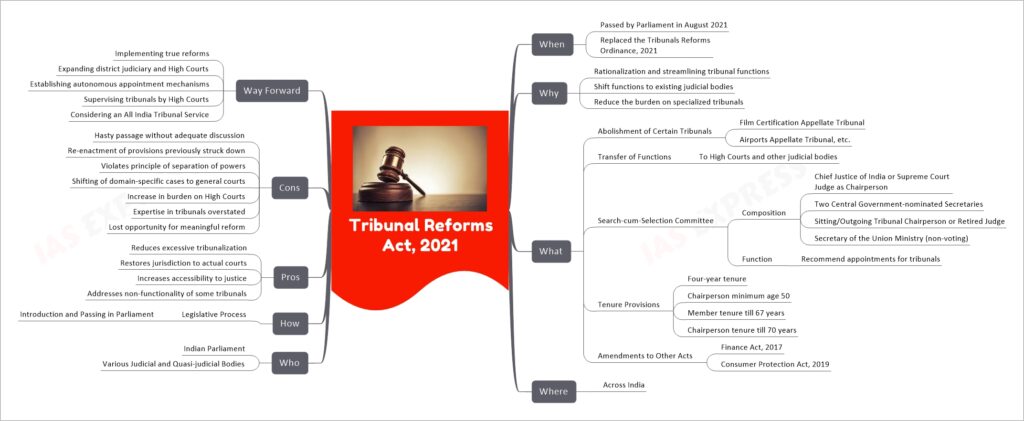Tribunal Reforms Act, 2021

Summary: The Tribunal Reforms Act, 2021, represents an attempt to streamline the tribunal system in India by abolishing certain tribunals and transferring their functions to existing judicial bodies. While it aims to reduce the burden on specialized tribunals and increase accessibility to justice, the Act has faced criticism for its hasty passage, potential violation of the principle of separation of powers, and for reintroducing provisions previously struck down by the Supreme Court. The way forward includes implementing true reforms, expanding the judiciary, and establishing autonomous mechanisms for appointments and oversight.
If you like this post, please share your feedback in the comments section below so that we will upload more posts like this.

